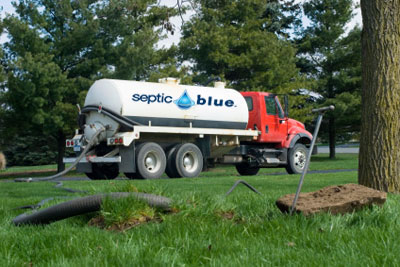
Feb 21, 2023
A full septic tank means two things: the sludge layer has taken up 30% of the volume of your septic tank, and the liquid wastewater within the tank has reached the maximum level that it can hold. In order to understand what a full septic tank means, let’s look at the three septic tank layers.
There are three different layers within a septic tank: sludge, scum, and effluent. Each layer plays an essential role in the functioning of your septic tank.
This is the top layer, floating on the top of the liquid wastewater. It consists of lighter materials such as fats, oils, grease, soap by-products, toilet paper, and more. If the scum layer is thick, it means that the tank needs to be cleaned out.
This is the middle layer within a septic tank and is made up of liquid wastewater that remains after sludge sinks to the bottom of the tank and scum rises to the top of the tank. The liquid wastewater is discharged into the drainfield. The effluent layer provides an oxygen-rich environment that supports bacterial activity in a septic tank. This layer should not rise above the outlet pipe. On average, the effluent level should be about 10 inches from the top of the tank, depending on the size of the tank. If the effluent level in a septic tank is above the outlet pipe, you may notice pooling near the tank and a foul odor, which means the tank is full. This can also indicate problems with the absorption area, a blocked outlet pipe, or some failure somewhere in the system. If wastewater begins to pool around your septic tank, you’ll need to call a professional septic company to inspect the tank and recommend the best course of action.
This is the solid waste that settles at the bottom of your septic tank. The sludge is made up of a wide range of solids such as food waste, soil, bones, grit, and other "sinkable" solids. The bacteria inside the tank decompose the sludge layer over time, allowing the liquids to separate and drain into the drainfield. To prevent septic tank failure, you should have as little septic sludge in your septic tank as possible. Excessive septic sludge will interfere with the bacterial activity in your septic tank and lead to incomplete digestion and foul odors. Ideally, the sludge layer should never exceed about 30% of the septic tank’s volume. When the sludge layer takes up 30% of the volume of your septic tank, you should schedule septic tank pumping with a professional septic company.
A full septic tank can lead to a number of problems around your home, including foul odors, pooling of wastewater in your yard, and pest infestation. If you’ve noticed signs of septic tank trouble, call the septic experts at Septic Blue of Charlotte for septic tank repair. Here at Septic Blue of Charlotte, we offer dependable and cost-effective septic service, including septic tank pumping, septic tank repair, septic cleaning, septic installations, and more.